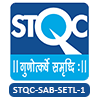Website Testing
Websites represent the face of the organization/department in the cyber world. Like the Department itself, the website also has to continually grow and evolve. As the website grows in size and reach, the expectations of the citizen also grow. It is therefore important that we set down rules and regulations to operate and manage the websites effectively.
Broadly Website testing covers following testing activity of a web application:
- Functional Testing
- Performance Testing
- Security Testing
- Usability Testing
- Configuration and compatibility Testing
Website Testing: Based on Guidelines of Indian Government Website (GIGW)- GIGW Compliance:
ITQCR is the premier test lab for e-governance test activity among all SETL laboratory of STQC (Standardisation Testing Quality Certification), an organization of Ministry of Electronics & Information Technology, Government of India to do website testing based on GIGW (GIGW 2009, GIGW 2018 & GIGW 2023). Team ITQCR (STQC, MeitY GoI SETL IT Test Laboratory) conducted test more than 300 different websites of Government Departments at all levels (Central, State, District).
The first version of GIGW was launched in 2009. This version was successfully adopted by many government websites. However, keeping in view the significant advances in technology and usage trends, a revised version (GIGW 2023 or GIGW ver 3.0) of the guidelines has been formulated to maintain relevance with the dynamic times and to ensure that the benefits reach all citizens of the country. The new version (GIGW 2023 or GIGW ver 3.0) of the guidelines are an outcome of feedback and consultations with industry, society, government departments and diligent reference to evolving standards set by International bodies like W3C. It is suggested that the Indian Government website and apps adhere to the common minimum standards which have been derived, in the form of guidelines discussed in this document, as prerequisites to fulfill its primary objective of being a citizen centric source of information & service delivery.
These Guidelines have been framed with an objective to make the Indian Government Websites conform to the essential prerequisites of UUU trilogy i.e. Usable, User-Centric and Universally Accessible. They also form the basis for obtaining GIGW Compliance from SETL of STQC or STQC Dte (Standardization Testing Quality Certification), an organization of Ministry of Electronics & Information Technology, Government of India. These Guidelines are based on International Standards including ISO 23026, W3C’s Web Content Accessibility Guidelines (WCAG 2.0) Rights of Persons with Disabilities Act 2016 as well as Information Technology Act of India. These guidelines are being circulated amongst all Indian Government Departments at all levels (Central, State, District). These should be followed and implemented on priority so that the overall aim of making all Indian Government websites citizen focused and visitor friendly may be realized.
One of the major focus areas of the Guidelines is web accessibility. With respect to accessibility focus is on the following:
1. Addressing the needs of the persons with disabilities.
2. Ensuring that the sites are accessible with equal ease to all users on all the major browsers and across all platforms and bandwidths i.e. universally accessible.
The Government of India has recognized that accessibility is a concern which it needs to address if it has to engage comprehensively and effectively with the public. The Guidelines for Indian Government Websites (GIGW 2009), the National Policy on Universal Electronics Accessibility (2013) and most recently the Rights of Persons with Disabilities Act 2016 all require compliance with web accessibility standards and provision of public information and resources in accessible electronic format. The increasing adoption of mobile as an engagement platform hence necessitates the adoption of guidelines to ensure that applications are accessible to and usable for persons with disabilities.
GIGAW aims to ensure that people with disabilities can perceive, understand, navigate, interact and contribute through Web. GIGAW has been developed in accordance with W3C’s Web Content Accessibility Guidelines 2.0 which are internationally accepted standards on accessibility. GIGAW ensures compliance with level AA of WCAG 2.0.
Compliance to these guidelines will make the websites accessible to persons with various disabilities like low vision, deafness and hearing loss, learning disabilities, cognitive limitations, limited movement, speech disabilities and combinations of these which may otherwise hinder access to the web. Compliance with these guidelines ensures that any disabled person using an assistive technology can easily navigate the website. Since these guidelines aim at fulfilling the common objective of making the Indian Government websites citizen friendly and conform to high standards of quality, the website development and management teams in all Departments should endeavor to comply with these guidelines in earnest spirit. Further, the website management teams should ensure that all Government websites undergo and clear a security audit carried out by an authorized empanelled agency before being hosted, as well as after major revisions.







